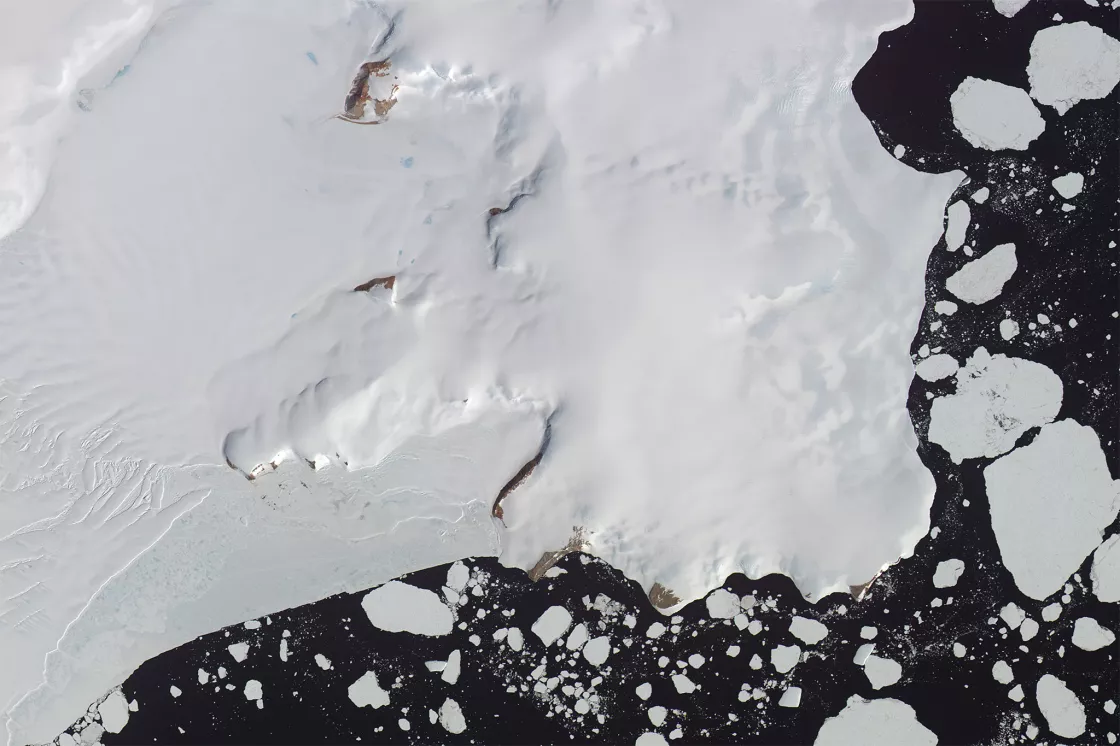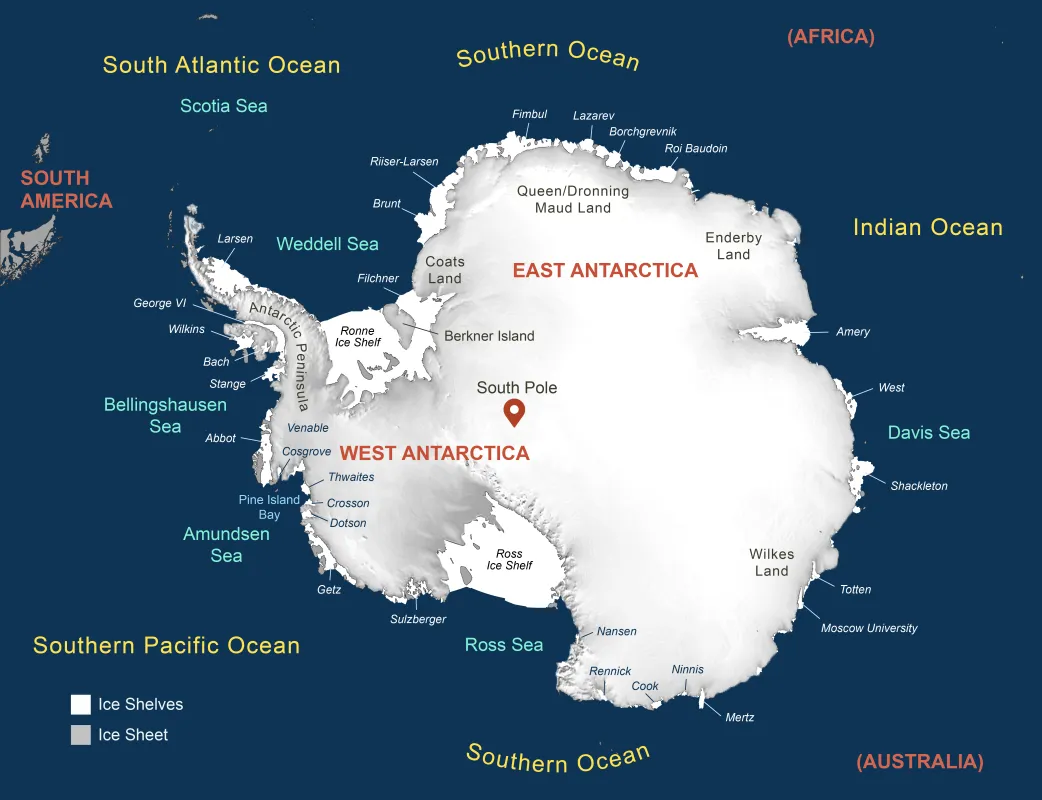Ice Shelves
Overview
What is an ice shelf?
Ice shelves are extensions of thick land ice that flow out over a cold coastal ocean. Ice shelves range in thickness from about 50 to 600 meters (160 to 2000 feet), and can extend tens to hundreds of miles from the coast, where the ice first goes afloat. Some ice shelves have persisted for thousands of years. When an ice shelf is narrower than the bay it occupies, it is sometimes called an ice tongue.
Ice shelves fall into three categories:
- Ice shelves fed by glaciers
- Ice shelves created by sea ice and local snowfall
- Composite ice shelves
Glacier outflow is the most common source of ice for larger ice shelves.
Where are ice shelves located?
Most of the world's ice shelves fringe the Antarctic coast. Antarctica has 15 major ice shelf areas and many smaller ones. The Wilkins Ice Shelf is an example of a composite ice shelf composed of both glacier-fed ice and fast ice that has been thickened by snowfall for many decades to a few centuries. Ice formed from direct snowfall accumulation is a significant part of nearly all ice shelves.
The largest ice shelves, as big as Texas or France, are located in Antarctica, but some unusual ones also occur in the Arctic. One example of an ice shelf made up of compacted, thickened sea ice hundreds of years old is the Ward Hunt Ice Shelf off the coast of Ellesmere Island in northern Canada. This type of ice shelf was common in the northernmost fjords of the Canadian and Greenland coast, but many have broken apart under warmer conditions.

